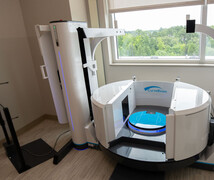Painful bunions can be treated successfully with surgery. The key is finding a surgeon you trust, one who identifies your unique issues and goals, and recommends the right procedure for you.
Pointy-toed, high heels aren’t just a fashion statement. They are the main reason why more women than men experience bunions. Shoes that are too tight, too narrow, too high, or just ill-fitting can reposition the joint at the base of the big toe, said Karl Schweitzer, MD, an orthopaedic surgeon at Duke. The result: a bony protruding bunion.
For some, bunions are simply unattractive. For others, however, they are downright painful. The skin becomes red, irritated, and swollen. Painful arthritis can develop, as well as bursitis, hammertoes, pain, and swelling in the ball of your foot.
How to Prevent Bunions from Getting Worse
Seeking surgery because you don’t like how your foot looks isn’t recommended. While some doctors do it, the American College of Foot and Ankle Surgeons and the American Orthopaedic Foot and Ankle Society strongly discourage cosmetic foot surgery.
Bunion surgery should be considered when the discomfort impacts your ability to walk comfortably and wear normal-fitting shoes, and only after you’ve tried nonsurgical methods for three to six months, said Dr. Schweitzer.
Changing to wider, more comfortable shoes, padding or taping your foot to reduce stress on the bunion, wearing bunion spacers or guards, taking over-the-counter pain relievers, wearing shoe inserts, and icing your foot may be recommended to reduce pain and swelling.
If these methods do not adequately improve your symptoms, surgery may be an option for relief.
Understanding Bunion Surgery
“People understandably get confused when they go on the Internet and see dozens of bunion procedures,” explained Schweitzer. “There are many variables that go into selecting the right bunion surgery. We consider the source of the pain, other symptoms, the extent to which the bunion can be corrected, elated conditions, and, of course, the severity of the deformity.” For some, minimally invasive bunion surgery may be an option.
During surgery, foot and ankle specialists like Schweitzer may do one or all of the following: correct abnormal angulation and rotation of the big toe; remove bone and swollen tissue; rebalance ligaments and tendons; and in certain cases, fuse a joint.
“Generally patients are not back in regular shoes until at least six to eight weeks,” said Dr. Schweitzer. Complete recuperation can take at least four months.
Because of the long journey from deciding to have bunion surgery through full recovery, it’s important that you choose a surgeon you feel confident with, trust, and respect. “This isn’t necessarily a simple procedure,” he said. “We like to see patients on a frequent basis after bunion surgery to make sure they are healing well and maintaining the correction we made during surgery." Even in the best of hands, bunion surgery is not perfect, and issues can arise afterward. "I want my patients to be well-informed, and that includes what to expect during and after surgery, along with potential risks. My goal is to build a good relationship with the patient and work with them to ensure the best result," said Dr. Schweitzer.
Bunions can also recur despite the surgeon’s best efforts.
“Bunion surgery tends to get a bad rap because a lot of bad surgeries are done for the wrong reasons, or the wrong surgery (i.e., having a surgery that is underpowered to correct a particular deformity) can produce less than desirable results,” said Dr. Schweitzer. “If the right surgery is done for the right reason, the patient can expect a good outcome. You just have to be in the right hands.”




